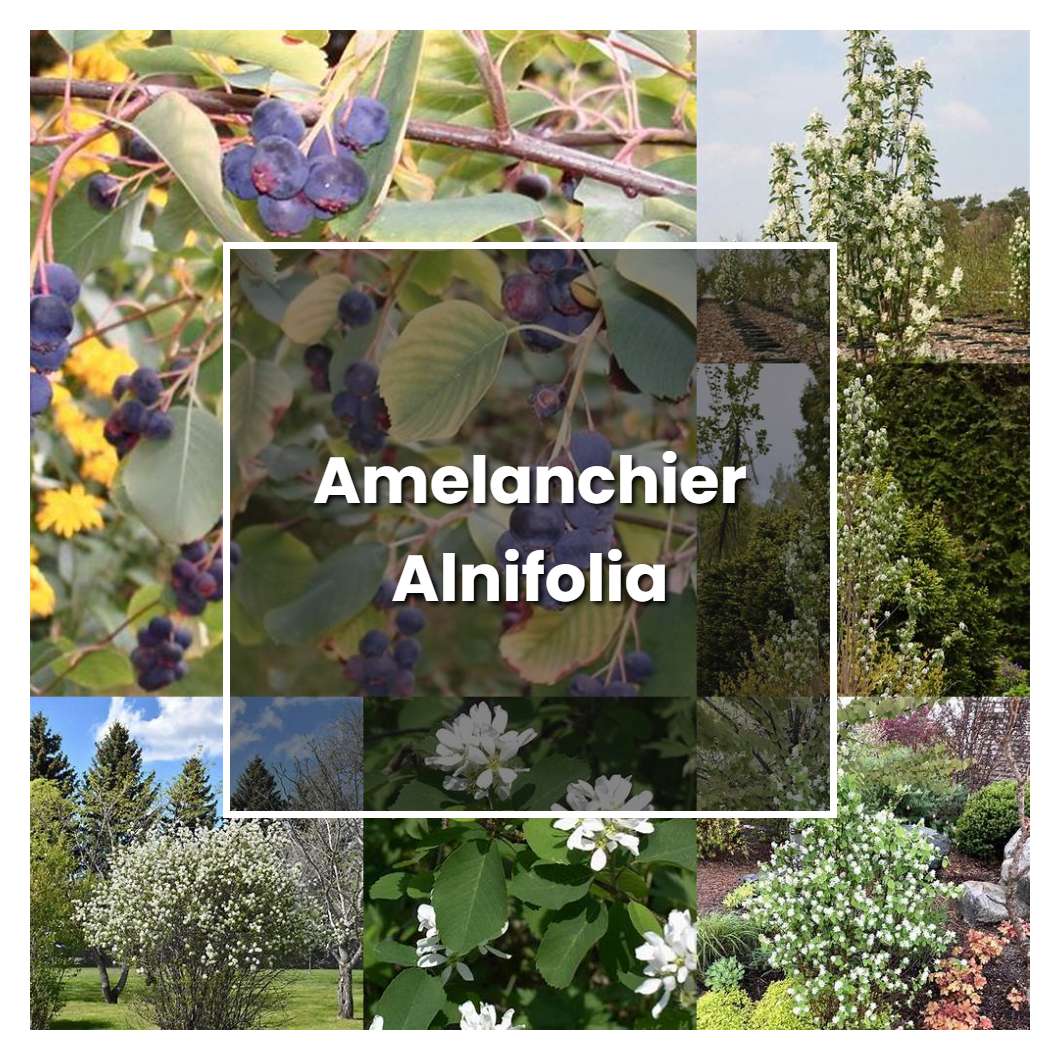Amelanchier alnifolia is a plant that is native to North America. It is also known as the saskatoon berry plant. This plant is a deciduous shrub that can grow to be about 3-5 feet tall. The leaves of this plant are oval shaped and the flowers are white. The fruit of this plant is a dark blue berry.

Related plant:
Amelanchier Lamarckii
Related plant:
Amelanchier Laevis
About soil condition, The soil should be well-drained, sandy loam to rich loam. It prefers neutral to slightly acidic soils, but can tolerate some alkalinity. The roots are shallow and spreading, so it does not do well in poorly drained soils, or soils that are chronically wet.
Not too different with other plants, the amount of sun an Amelanchier alnifolia needs depends on the climate it is in. In general, this tree does best in full sun to partial sun, meaning it needs at least six hours of direct sunlight each day. However, in hotter climates, this tree may do better in partial shade, as too much direct sunlight can scorch the leaves. If you are unsure how much sun your tree needs, ask a local nursery or your county extension office for guidance.
The temperature condition of the (amelanchier alnifolia) is relatively cool compared to other plants. It is able to withstand temperatures as low as -40 degrees Fahrenheit. However, it should be noted that the plant will not flower or fruit if the temperature is below freezing.
Ideal humidity condition for this plant is 60% or lower. The plant does not like to be in wet or waterlogged soil, and will not tolerate having its roots sitting in water. If the humidity is too high, the leaves will start to turn yellow and fall off.
About fertilizer, usually the plant doesn't need much fertilizer and too much can actually be harmful. It's best to just give it a light application of a well balanced fertilizer in early spring. When it comes to the roots, it's best to plant this tree in an area with well drained soil. If the roots sit in water for too long, they can start to rot.
Pruning is an important part of caring for your amelanchier alnifolia plant. By pruning your plant, you ensure that it stays healthy and vigorous. Pruning also helps to control the size and shape of your plant. When pruning, be sure to remove any dead or dying branches. Also, remove any branches that are Rubbery, broken, diseased, or damaged.
Propagation is pretty easy with this plant as it can be done through seed, softwood cuttings, or root division. Seed should be started indoors in late winter, and then transplanted outside once the last frost has passed. Softwood cuttings can be taken in early summer and rooted in a potting mix, while division can be done in early spring or fall. The best time to transplant this plant is in the spring.
Usually, the plant growth rate is determined by the amount of available moisture. The growth rate is also influenced by soil type, fertility and density as well as climate conditions. Temperature, sunlight and wind all play a role in how fast the plant grows. In general, well-watered plants will have a higher growth rate than those that are not.
Common problems for this kind of plant are canker, dieback, and twig blight. All of these problems can be caused by different types of fungi. Canker is usually caused by Cytospora spp. and can cause the bark to crack and ooze sap. Dieback is often caused by Botryosphaeria dothidea and can cause the leaves to turn yellow and fall off. Twig blight is often caused by Rhizoctonia solani and can cause the twigs to die back.
Source:
Amelanchier alnifolia - Species Page - NYFA: New York Flora Atlas
Juneberries Amelanchier alnifolia Carrington REC - NDSU Ag CMS
Amelanchier alnifolia | UW Libraries Digital Repository
